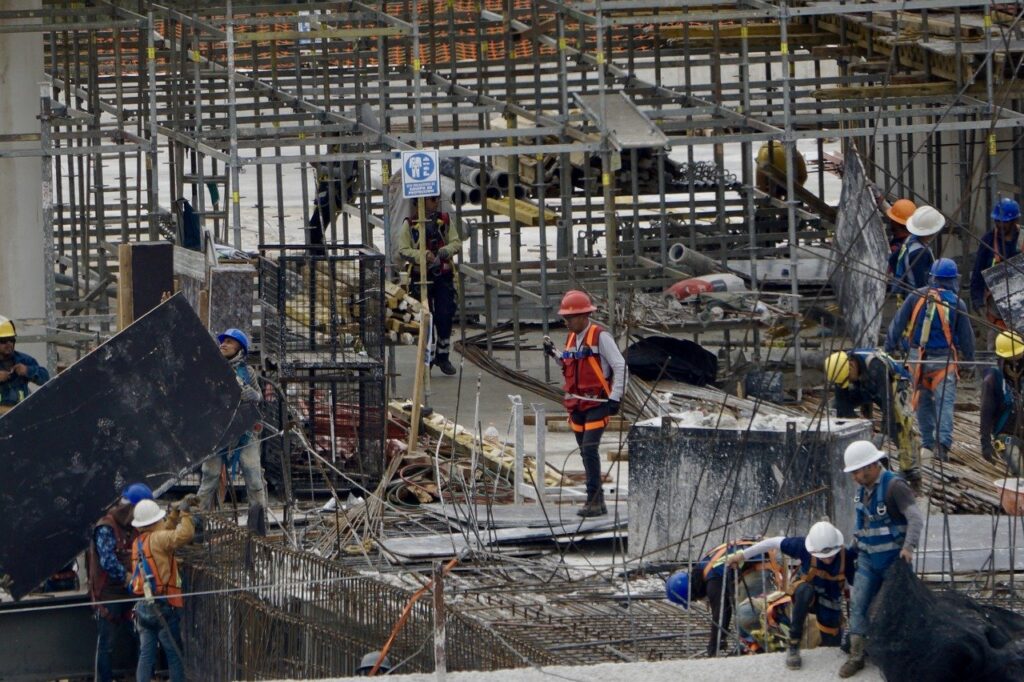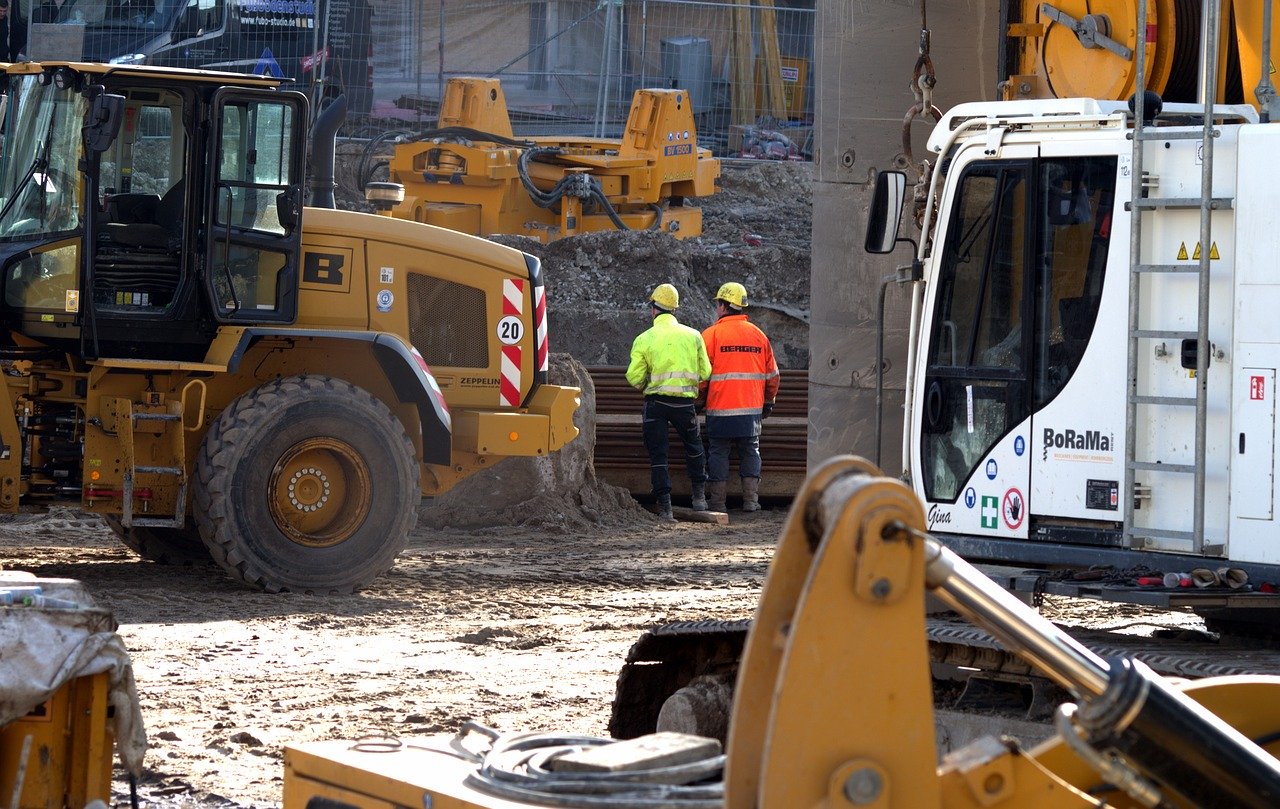Planning is at the heart of every construction project but all too often, the master schedule doesn’t reflect the reality on site. As a project manager, it is extremely important that you bring your project plan to life by moving all team communication and collaboration in a real-time dynamic environment.
In that way, the schedule gets updated with data straight from the site and you no longer have to chase people with phone calls, emails or text messages. This is the first step for consistently ensuring that your team contributes to the schedule whether you are on site or not.
Free ebook: Why WhatsApp and Excel aren’t enough for running complex construction projects
And that’s not all! Enabling all stakeholders to work on the same programme will keep everyone aligned and make it easier for them to hold their commitments as well as take ownership for resolving any constraints that might come in the way.
This is how you bring peace of mind back to your projects, protect your margins and keep commercial claims away.
However, to connect everyone in your team around a shared, live version of the programme you need to have the right tools. Many project managers tend to rely on WhatsApp, Messenger, text messages or even emails and Excel spreadsheets to communicate progress and share updates.
The problem is that these tools aren’t built for construction teams and, as a result, are unable to provide a link to individual tasks in the schedule. So you soon find yourself spending hours trying to figure out the context of the updates you receive and what their consequences are for your tasks.
The result? Misalignment around the project’s milestones, limited visibility of what’s happening on site and interruption of site activities because problems aren’t escalated fast enough.
The 3 tips for placing planning at the centre of your projects
Regardless of the size, budget or time frame of a project, one thing is always sure. Everything starts from a strong culture around planning. Only then, will the different stakeholders of the project remain aligned at all times so that value-adding tasks can proceed and close according to the commitments made each week.
This is what makes the difference between a construction team that is doing just okay from a team that is doing great.
To help you bring the same proactive approach around planning to your projects, we present below three key secrets that you should always keep in mind:
1. Make your plan available to everyone
As a project manager, you should always think of the schedule as the heartbeat of your project. One of your top responsibilities is to keep your project’s rhythm at a regular pace. It’s like running a race. If you want to succeed, you need to find the right balance and avoid going too fast or too slow.
To make that happen in projects with many repetitive processes (hospitals, roadwork, apartment blocks), you have to break down your programme into smaller manageable tasks that consistently add value.
Like that, you will be able to plan your next steps with precision, maintain better control over your project and prevent delays. If you plan your tasks in days then any delay that might appear will most probably also result in a delay of a few days.
So instead of trying to plan ahead for the entire project from start to finish, it is better to roll out 3-6 week lookahead programmes and link them to the master schedule. In that way, you will have more flexibility when defining the next milestones and you will be able to align your teams around them much easier.
Learn more: 5 questions all Project Managers should ask themselves before they start a project
But here comes the real challenge. Many project managers quickly find themselves lost in a sea of disconnected information because they are using the wrong tools to connect their different schedules.
They have their master schedule lying around on paper form, detailed programmes stuck in MS Project, numerous updates from the site on WhatsApp and Messenger, outdated reports on Excel, and document approvals lost on email threads.
Working on all these applications makes it impossible to keep track of what’s happening on the field. This is why you need to move all data and project communication to the cloud like you already did with your documents around a decade ago.
If you connect your teams around a live, centralised version of the programme, you will also connect your data and your workflows. These are key components of building trust between your teams, becoming more proactive in resolving or even better preventing unforeseen events and all in all building better.
2. Get visibility and clarity of where your project really is
Imagine that there is a group of blindfolded scientists who go to inspect an elephant for the first time. They have never seen one before in their life so they will try to understand what it looks like just by touching it. The problem is that all scientists have their eyes covered and will get to inspect the elephant at a specific place without being able to exchange data and communicate their findings to the others.
Soon, they start disagreeing because each one of them gets a different, and at the same time distorted, picture of what an elephant looks like. The one who inspects its tail thinks that an elephant is like a snake, the one who touches its leg believes that the elephant is like a tree and the third one who inspects its ears thinks that it looks like a fan. Unless they gain access to the whole picture and stop working in silos, they will never be able to come up with a reliable and accurate version of the truth.
Does this sound familiar? That’s exactly what working on a construction schedule that isn’t shared in a real-time, collaborative environment feels like. The programme stays locked in MS Project or Excel making it impossible for project managers and site foremen to align with the rest of their team. No one can be sure that the version of the schedule they have in their hands reflects reality. They are just getting frustrated sending emails back and forth trying to figure out where they stand. Like blindfolded scientists who inspect an elephant. In the meantime, the project manager and the site foreman are overwhelmed trying to collect multiple documents and updates from different sources to update their plan. However even after spending 40% of their day on this, they still can’t be absolutely sure if the tasks they have prioritised bring value or that the promises they have heard from the team about closing an activity are reliable.
This is why moving your project information to the cloud is so essential. It will help you connect the dots and keep all team members on the same page.
But it’s wrong to believe that you can rely on tools like WhatsApp, Excel and MS Project for that. Good as they are, these solutions aren’t built for team communication in construction.
Instead, you might want to follow the example of Raul Hernandez, VP of Business Development at the residential contractor Grupo Provivienda, who managed to reduce building time for one house from 310 days down to 60 days after:
- moving his plan to the cloud (the same thing he had already done with his drawings).
- no longer sending emails back and forth to validate the latest programme version.
- replacing MS Project and Excel, because they weren’t fit for purpose.
On top of that, as his team works now on the same programme and is fully aligned, it became easier for team members to hold their commitments and take ownership for resolving any constraints that might come in the way. Raul finally has peace of mind that reliable workflows are put in place and that everyone is working from the same version of the schedule.
“Before, it was taking us 310 days to construct a house. It was due to downtime between activities. Now the same house is built in 60 days. The thing that changed it for us was connecting the teams through a live programme. If your programme is not updated frequently, problems on site get worse because they have not been communicated to the right person quickly,” explains Raul.
3. Make sure your team contributes to the schedule whether you are on site or not
How often do you check your smartphone during the day in order to send a message, take a photo or just go through the news? An average smartphone user does that a couple of times per hour. Why is it then that there is so much resistance from people on site when there is a suggestion of bringing smartphones on the field for progress schedule control and progress schedule reporting?
People on site should be able to pick up their phone and contribute real-time updates in a shared location on the cloud where all stakeholders can easily respond, add their comments or take action to prevent or overcome a constraint.
Read also: 5 tips that every site foreman should know about
This is what connectivity in construction should be all about when the discussion goes around planning. It’s about bringing the site and the people together and about combining the physical with the virtual. In other words, connecting field updates and photos taken on site with progress reporting in a single location open to all relevant parties. Subsequently, this central place will be used for sharing progress, flagging issues and reacting to bottlenecks in a timely manner.
That’s something that forward-thinking players of the industry, like VolkerFitzpatrick that we mentioned earlier, are already doing actively:
“Our programme is updated at site level. That means that the operative supervisor provides us the information from the site. So we get photos; we get updates. This allows the team to take more ownership and provides us with visibility across the whole site team,” highlights Matt Ghinn from VolkerFitzpatrick.
So at the end of the day, it’s about having your eyes on site at all times without necessarily having to be there physically. This is how you can consistently stay connected with your teams and support the delivery of value-adding activities to ensure the successful completion of your project.
Keep your teams aligned around milestones at all times!
By now, you should have a clear understanding of what you need to do in order to bring your schedule to life and safeguard the margins of your repetitive projects. If you want to take the next step and find out what tools can help you implement this new approach to your projects, download our free ebook here!




